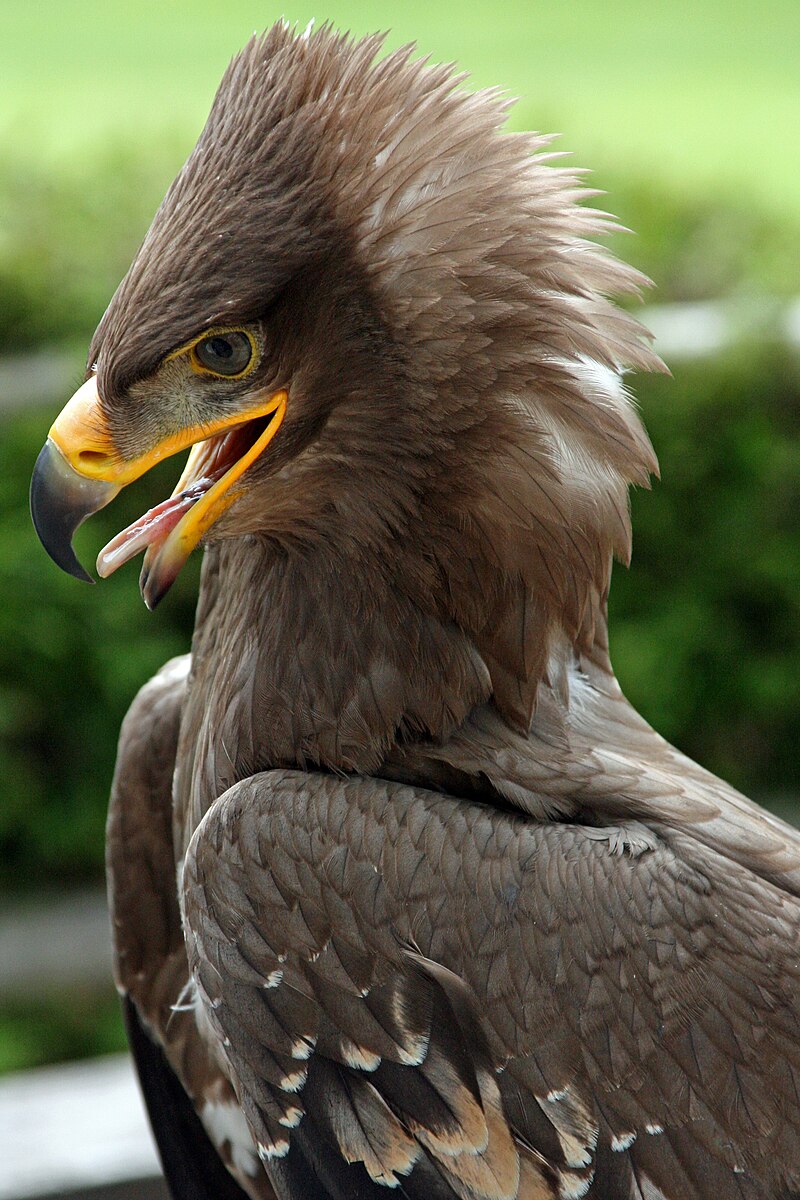Steppe eagles, also known as Aquila nipalensis, are large birds of prey found in Europe and Asia. These majestic birds have a unique way of attracting their mates, which is crucial for their survival and reproduction. In this blog post, we’ll explore the fascinating courtship rituals and mating behaviors of the steppe eagle.
Courtship Rituals: The Dance of the Steppe Eagles
The courtship rituals of steppe eagles are a sight to behold. These birds engage in a series of aerial displays and acrobatic maneuvers to impress potential mates. The male steppe eagle will often soar high in the sky, performing daring dives and loops, before returning to the female’s location. This display showcases the male’s strength, agility, and hunting prowess, all of which are attractive traits to the female.
In addition to aerial displays, steppe eagles also engage in ground-based courtship rituals. The male will often perform a “wing-spreading” display, where he extends his wings to their full span and walks around the female, occasionally flapping his wings. This behavior is believed to demonstrate the male’s size and physical fitness, both of which are important factors in the female’s mate selection.
Nest Building: A Collaborative Effort
 Image source: Steppe Eagle by Fimb
Image source: Steppe Eagle by Fimb
Once a pair of steppe eagles has formed, they will work together to build a nest. These nests are typically constructed on the ground, on hillsides, or on elevated structures such as power poles or bushes. The nest-building process is a collaborative effort, with both the male and female contributing to the construction.
The male steppe eagle will often gather the majority of the nesting materials, such as sticks and twigs, while the female is responsible for arranging and shaping the nest. This division of labor ensures that the nest is sturdy and well-constructed, providing a safe and secure environment for the eggs and hatchlings.
Egg Laying and Incubation: A Shared Responsibility
After the nest is complete, the female steppe eagle will lay 1-4 eggs, which are then incubated for up to 45 days. Both the male and female take turns incubating the eggs, ensuring that they are kept warm and protected throughout the process.
During the incubation period, the male steppe eagle will often bring food to the female, ensuring that she has the necessary energy and resources to focus on the task at hand. This cooperative behavior is crucial for the successful hatching of the eggs and the subsequent rearing of the young.
Parental Care: Raising the Next Generation
Once the eggs have hatched, the steppe eagle parents continue to work together to care for their young. Both the male and female will take turns feeding and protecting the hatchlings, ensuring that they have the best possible chance of survival.
Unlike some other eagle species, the steppe eagle does not have a dominant chick that outcompetes its siblings. Instead, the parents will often raise multiple chicks successfully, with the young eagles staying in the nest for up to 60 days before fledging and becoming independent.
Challenges and Conservation Efforts
Unfortunately, steppe eagles are facing significant challenges to their survival. Habitat destruction, electrocution on power lines, and other human-related activities have led to a decline in their population. The International Union for Conservation of Nature (IUCN) has classified the steppe eagle as “Endangered,” indicating the urgent need for conservation efforts.
Organizations and researchers around the world are working to protect the steppe eagle and its habitat. This includes initiatives such as monitoring nesting sites, implementing power line mitigation measures, and educating the public about the importance of these majestic birds.
By understanding the unique courtship rituals and mating behaviors of the steppe eagle, we can better appreciate the importance of these birds and the need to protect them for future generations.
References:
– Operation Migration. (n.d.). Steppe Eagle: The Ultimate Guide. Retrieved from https://operationmigration.org/steppe-eagle-the-ultimate-guide/
– European Raptors. (n.d.). Steppe Eagle (Key Facts To Know). Retrieved from https://europeanraptors.org/steppe-eagle/
– Whitehaven News. (2024, February 17). The ‘Queen’ Steppe Eagle hoping to find love at Muncaster Castle. Retrieved from https://www.whitehavennews.co.uk/news/24124904.queen-steppe-eagle-hoping-find-love-third-match/

